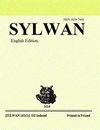智能印刷电路板缺陷检测
IF 0.6
4区 农林科学
Q4 FORESTRY
引用次数: 0
摘要
在电子产品的制造过程中,最关键的阶段之一是将元件焊接到印刷电路板上。即使PCB中的一个小缺陷也可能导致最终产品的重大问题。因此,在制造过程中采用了严格的缺陷检测过程,可分为人工检测和自动光学检测(AOI)。人工检测存在速度慢、耗费人力和成本等缺点。因此,大多数制造商选择自动光学检测来加快生产。然而,目前大多数自动光学检测系统依赖于传统的光学检测算法。这些计算方法易受pcb放置或焊料量的细微差异所引起的照明条件变化的影响。因此,这些变化经常导致误判,其中合格的pcb被错误地归类为缺陷,导致AOI系统中的高假阳性率。提出了一种基于深度学习的PCB缺陷检测方法。提出的方法包括创建两个单独的模型,分别对有缺陷的部件进行分类。一旦两个模型都具备了基本的识别能力,就可以使用本文提出的方法将它们组合成一个主模型,以提高整体的识别精度。该模型已在电容器和电阻器数据集上进行了训练,实验结果表明,该模型对两种元件类型的准确率均超过99%。本文章由计算机程序翻译,如有差异,请以英文原文为准。
Intelligent Print Circuit Board Defect Detection
During the manufacturing process of electronic products, one of the most critical stages is the soldering of components onto the printed circuit board (PCB). Even a minor defect in the PCB can lead to significant issues in the final product. Therefore, a rigorous\ndefect inspection process is employed during manufacturing, which can be categorized into manual inspection and automated optical inspection (AOI). Manual inspection suffers from drawbacks such as slow speed and the expenditure of manpower and costs. Hence, most manufacturers opt for automated optical inspection to expedite production. However, most current automated optical inspection systems rely on traditional optical inspection algorithms. These computational methods are susceptible to variations in lighting conditions caused by slight differences in the placement of PCBs or the amount of solder. Consequently, these variations often result in misjudgments, where qualified PCBs are mistakenly categorized as defective, leading to high false positive rates in AOI systems.\nThis paper presents a deep learning based method for PCB defect detection. The proposed approach involves the creation of two separate models for classifying defective components individually. Once both models demonstrate a basic recognition capability, they are combined into a master model using the method proposed in this study to enhance overall recognition accuracy. The model has\nbeen trained on datasets for capacitors and resistors, and the experimental results indicate an accuracy of over 99% for both component types.
求助全文
通过发布文献求助,成功后即可免费获取论文全文。
去求助
来源期刊

Sylwan
农林科学-林学
CiteScore
0.70
自引率
16.70%
发文量
0
审稿时长
1 months
期刊介绍:
SYLWAN jest najstarszym w Polsce leśnym czasopismem naukowym, jednym z pierwszych na świecie. Został założony w 1820 roku w Warszawie. Przyczynił się w znakomity sposób do rozwoju polskiego leśnictwa, służąc postępowi, upowszechnieniu wiedzy leśnej oraz rozwojowi nauki.
 求助内容:
求助内容: 应助结果提醒方式:
应助结果提醒方式:


